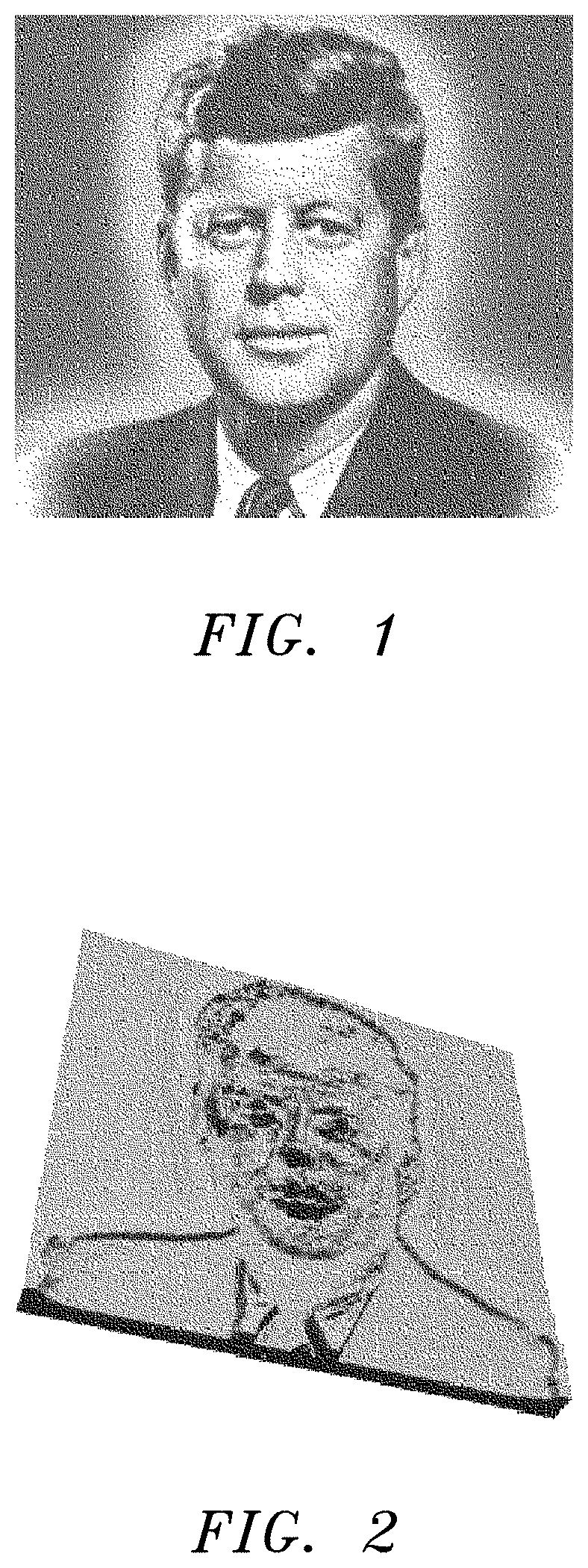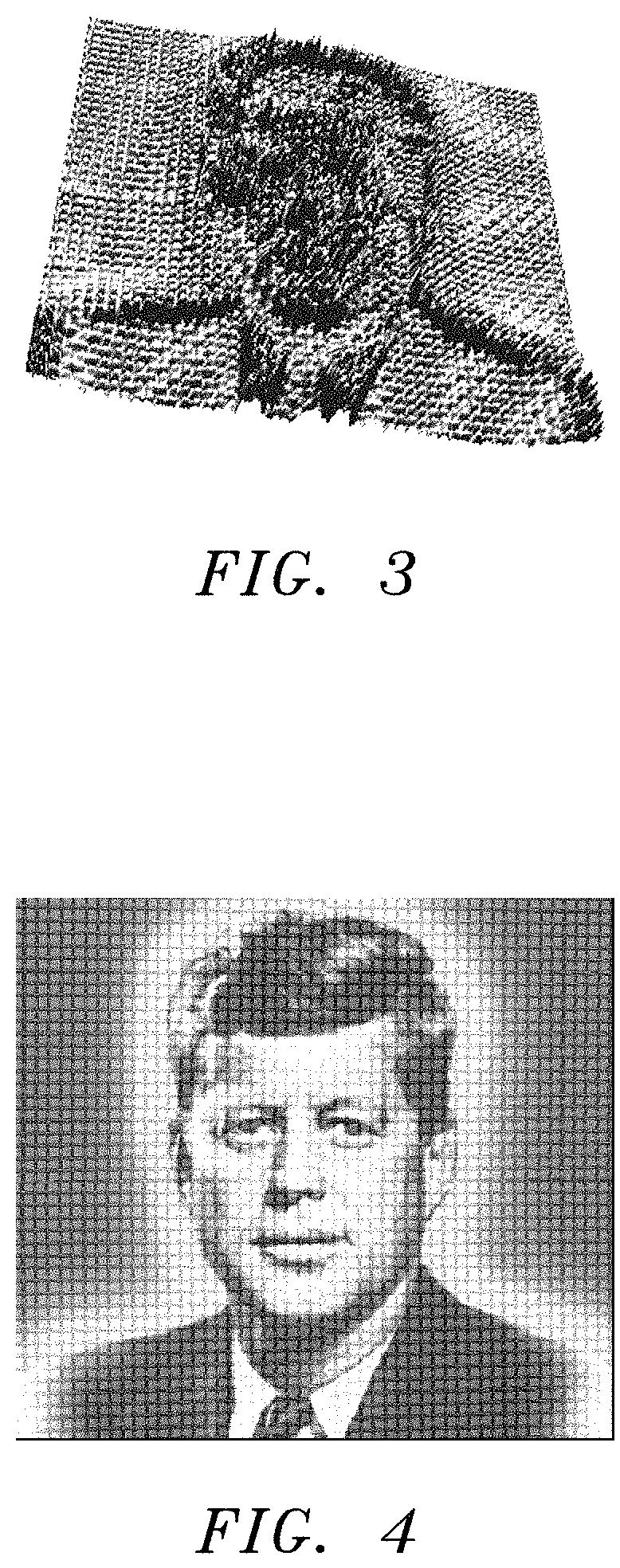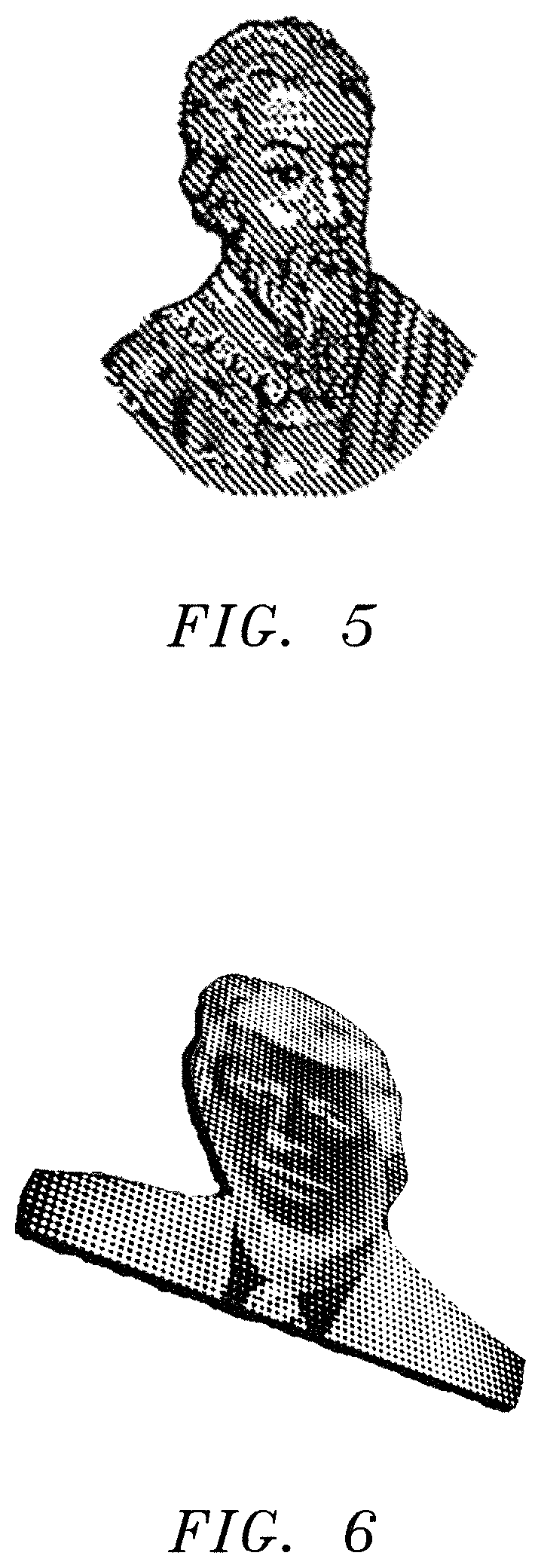Paper including one or more multi-tonal watermarks having full tonality, and an improved watermarking tool for manufacturing such paper
a multi-tonal watermark and watermarking technology, applied in the field of paper, can solve the problems of lack of tonality, risk of counterfeiting, and complex multi-tonal watermarks,
- Summary
- Abstract
- Description
- Claims
- Application Information
AI Technical Summary
Benefits of technology
Problems solved by technology
Method used
Image
Examples
Embodiment Construction
[0058]The paper of the present invention is based on a fibrous composition, the paper comprising at least one multi-tonal watermark having full tonality (depth). The paper may constitute a single or multi-ply sheet material, which may be made from a range of fiber types including synthetic or natural fibers or a mixture of both. For example, these sheet materials may be made from fibers such as abaca, cotton, linen, wood pulp, polymers / plastics and blends thereof. As is well known to those skilled in the art, cotton and cotton / linen or cotton / synthetic fiber blends are preferred for banknotes, while wood pulp is commonly used in non-banknote security documents.
Watermarking Device
[0059]The watermarking device of the present invention includes a wire-mesh element that is coupled to an electrotype element. In one embodiment, the wire-mesh element is a wire-mesh screen of weft and warp wires where the warp wires cross alternately above and below the weft wires and vice versa such that a...
PUM
 Login to View More
Login to View More Abstract
Description
Claims
Application Information
 Login to View More
Login to View More - R&D
- Intellectual Property
- Life Sciences
- Materials
- Tech Scout
- Unparalleled Data Quality
- Higher Quality Content
- 60% Fewer Hallucinations
Browse by: Latest US Patents, China's latest patents, Technical Efficacy Thesaurus, Application Domain, Technology Topic, Popular Technical Reports.
© 2025 PatSnap. All rights reserved.Legal|Privacy policy|Modern Slavery Act Transparency Statement|Sitemap|About US| Contact US: help@patsnap.com



